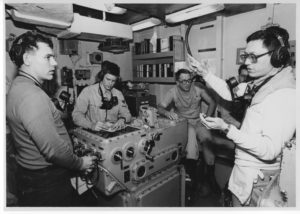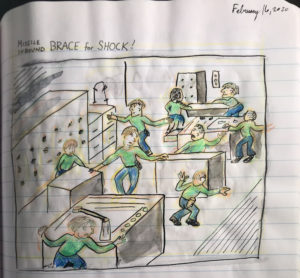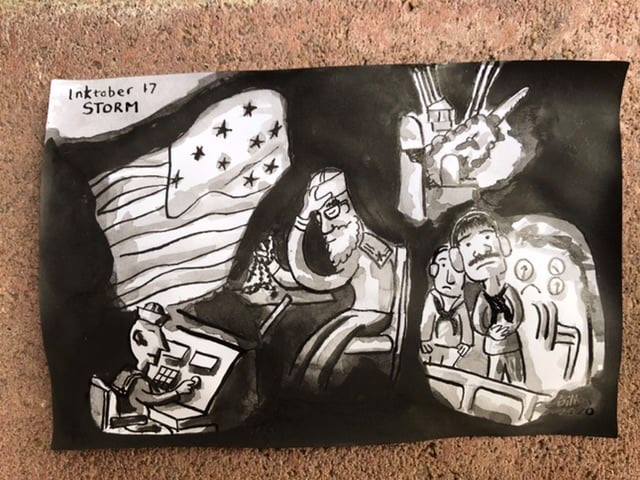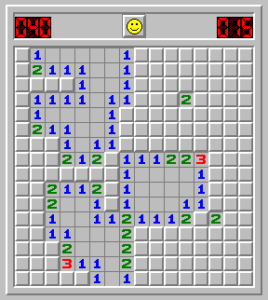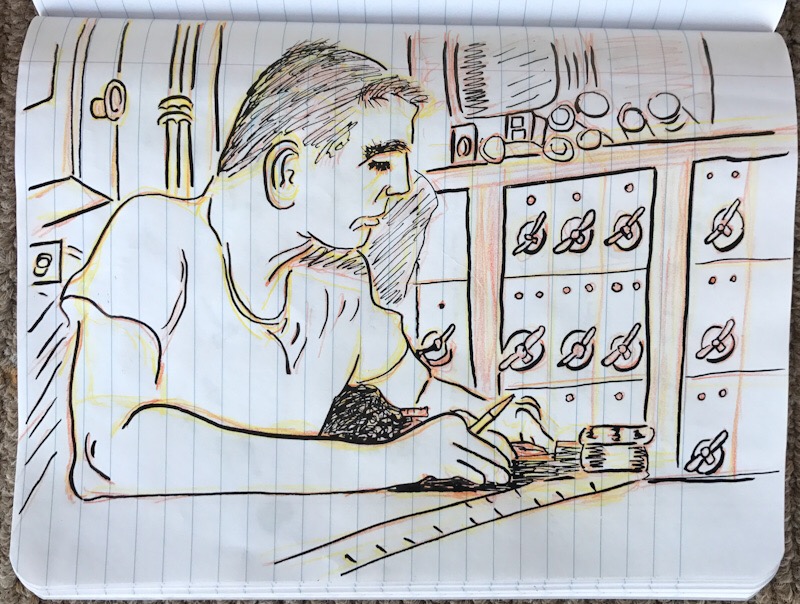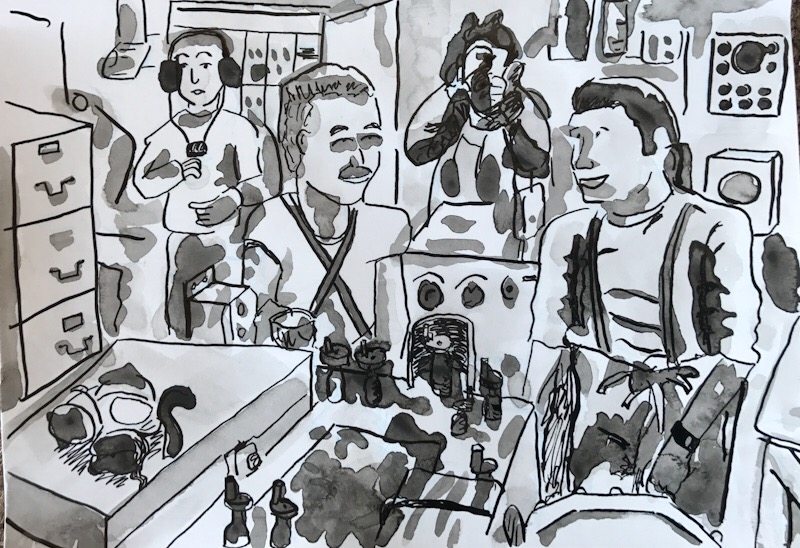Category Archives: desert storm
Analog Computers
Analog fire control computers were introduced to the US Navy fleet in 1917. They were last used in combat during Operation Desert Storm in 1991. Read more about the invention of the rangekeeper computer:
Drones and Battleship Cookies
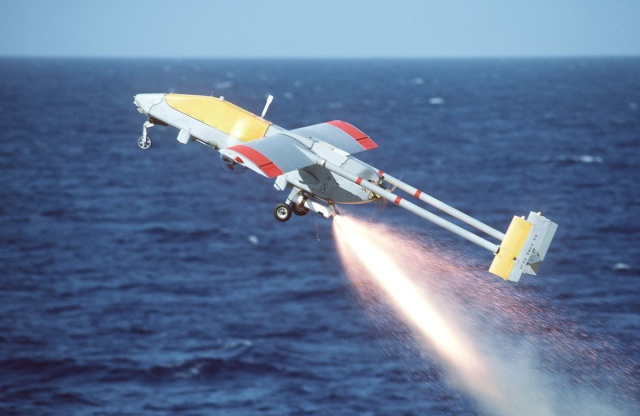
I found this article on the early testing of the Pioneer drone used aboard US battleships in the late 1980’s:
We used drones for spotting fire missions on the battleships Wisconsin and Missouri during Operation Desert Storm.
Naval Gunfire Support: Battleship at Kuwait
We were a couple of miles off the coast of Kuwait, operating in a “box” about ten miles long by half a mile wide. Several days before, two naval ships, the USS Tripoli and the USS Princeton had struck mines in these waters. Our operations area had been swept and declared clear of mines, but we were still moving at a fairly slow speed and in tight quarters. It takes most of that available half mile just to turn a battleship around.
We had been conducting naval gunfire support (shore bombardment) for some time with the sixteens striking various targets inland, such as tanks, munitions dumps, etc. The men and equipment you see in the photo were responsible for aiming and firing the sixteen-inch guns from this compartment, the forward main battery plotting room. Suddenly the captain’s frantic voice blared out of the 1MC, “missile inbound, all hands brace for shock!” So we stopped what we were doing and everyone thought, “oh no, we might die.” Then we bent our knees, stood on the balls of our feet, and braced ourselves against whatever solid thing we could find while we waited to see what would happen.
I thought about our friends who were topside in the fire control directors. Not long before, I had been assigned to one of the directors and knew that if we were struck, those men who were assigned outside of the safety of the armored belt that protected engines and fire control equipment would be in the most danger. Those men later reported that they could see the missile streaking towards us across the sky.
There were two Silkworm missiles fired at us that evening; the first one fell harmlessly into the ocean completely missing us and the second heading right at us was shot down by the HMS Gloucester in what turned out to be the first successful missile to missile combat engagement in naval history. The only actual damage we received was some friendly fire from another escort ship (I will have to look up what ship that was) but there were no injuries.
The friendly fire incident was also historic. It might have been the first time a military autonomous robot fired at and struck a friendly unit in combat. The neighboring ship (USS Jarrett?) had put the Phalanx CIWS into “full auto” mode, meaning it would detect and engage all threats without human intervention. When the USS Missouri saw the missile heading its way, the electronic warfare men activated anti-missile countermeasures. One of these, our SRBOC chaff launcher, fired a canister of chaff that was meant to distract the missile away from us, but it inadvertently also got the attention of the full-auto CIWS on the other ship. The CIWS automatically opened fire with its 2,000 round per minute depleted uranium Gatling gun and hit the Missouri a few times by accident.
In the end, we survived unscathed and were thankful to be alive.
Operation Desert Storm – The First Day
This week marks the 30th anniversary of Operation Desert Storm and I was there. The deadline for withdrawal from Kuwait had passed and in the early hours of January 16, 1991, a global coalition led by the USA went to war with Iraq.
At that point, I was in my 6th year of service in the US Navy, and it was actually my second trip to the Middle East; my first was in 1987 during the Iran/Iraq war. In 1987, Iran was of greater concern. The Iranian hostage crisis of the late 70s was still fresh in our minds, and the US was supporting Iraq in opposition to Iran.
Funny how it works out when the enemy of your enemy becomes your “friend.“ In 1987, our “friend” Iraq attacked the USS Stark on patrol in the Persian Gulf thinking it was an oil tanker. That’s how that war went, both belligerents were bombing oil tankers and the US Navy was there on escort duty.
Maybe the attack of the Stark was accidental, or maybe it wasn’t, but in 1990 when Iraq invaded Kuwait, the most oil-rich country in the world, the US took offense. It was pretty clear that Saddam Hussein was no friend.
So there I was, in January 1991, a Kansas kid who grew up with no knowledge of the sea, back for the second time in the treacherous waters of the Persian Gulf region. They warned us the evening before to get plenty of rest. They woke us up around 2 am, I think, and fed us an early breakfast. Navy chow aboard a battleship at the dawn of war is as good as anyone about to go into battle can expect. Plenty of hot coffee, bacon and eggs for everyone.
Later, we went to general quarters (battle stations) and we waited for the war to begin. In forward main battery plot, we were tuned in to CNN and Peter Arnett, broadcasting live from Baghdad. No picture, just the audio. My thoughts turned to my fellow fire control men above us, diligently preparing to let their tomahawk missiles fly. What would the Iraqi response be?
I had no mental picture of our ship’s position then, although we had one of the world’s first gps devices right there in the room with us. Lat & long numbers didn’t mean much to me without a map, and we had none at the moment. All I knew was those Tomohawks could fly from Kansas City to Denver and score a field goal through the uprights of Broncos stadium. We were hundreds of miles from Baghdad and probably pretty safe for the time being.
After the Tomahawks were launched, we sat there together in silence. Someone suggested since we were attacking at night, many of the places we were hitting might not even be occupied except for possibly the night time help. My thoughts turned to the lowly night janitor who would lose his life soon. His poor family counting on him for their support. He’s not even a military man, yet this day he will pay for his reckless leader’s sins with his life.
At that point I was pretty much a heathen, living like I’d never heard of God, but for some reason I pulled a rosary from my pocket and began to pray for everyone who would lose their lives that day. No one around me had anything to say as we sat and waited, with Peter Arnett droning on in the background about a last-minute reprieve while missiles and aircraft were hurtling right towards him.
Iraq would be pissed and they might reach out and touch us at some point. I thought about my shipmates and family back home.
It was a long wait. Over an hour, wasn’t it, before the bombs and missiles rained down on Baghdad. The fighting began. Reports of the first American casualty, a Navy fighter pilot was down and would never return home. The shit had gotten real. After six years of practicing and pretending, I was finally in it for real. But our day as battleship gunnery guys would not come until a while later.
We fired several missiles and the Mighty Mo was back in combat action for the first time since Korea. We would have to read about the Iraqi response to our attack in the Stars and Stripes because we didn’t experience anything first-hand that day.
Minesweeper
I was telling Emily about my experience in the Persian Gulf War I of 1991. I told her that my ship was to go in close to shore to do shore bombardment. The minesweepers cleared out a path through mine-infested waters two miles wide by ten miles long. We had to stay inside that box, or we could hit a mine.
Wait, she says, that minesweeper game is a real thing? I thought it was just a game!
Yes, I do love my daughter and these special moments we have together.
USS Wisconsin Unrep
A closeup view of the battleship USS Wisconsin in the days just prior to Operation Desert Storm. They are doing underway replenishment of fuel and ammunition.
Nank the 48 Operator
Relieved
Missile Inbound – Brace For Shock!
For regular visitors here, you may have seen some of my drawings from this memory of the first day of the ground war in Operation Desert Storm when Iraqi forces fired Silkworm anti-ship missiles at my ship. Here is a video that was recorded on 25 February 1991 around 0450 am.
This memory is forever embedded in my memory. If you have ever come face to face with your own mortality, perhaps through an accident or a close-call or, heaven forbid, the loss of a close loved one, you know these days.
I was deep inside of an armored WWII battleship. The plotting room is one of a battleship’s “vital organs” so to speak. It is the brains to the ship’s brawn, the 16″ guns. Without the computer equipment in this space, the ship cannot fight, so it is located deep inside the armored belt, right next to the engine spaces, meant to be safe from Japanese and German shells and torpedoes. Even so, with a missile bearing down on you and you can do nothing but stand there and take whatever is coming, you have to wonder if this could be the end?
Fortunately, our battlegroup had some missile destroyers along with us riding shotgun, and the HMS Gloucester shot down the one that came nearest to us. I’ll never forget the name of that ship either. (There is a lengthy article about the missile attack incident you can also read.)
Later in the video, you can see us putting on gas masks because we were warned that a gas attack was imminent. Missiles, now gas? At that point I was wearing a little protective box on my head, inside of a bigger protective box – the plotting room, inside of a bigger box – the armored belt, inside a still bigger box floating in the ocean – the battleship. Claustrophobia anyone?
